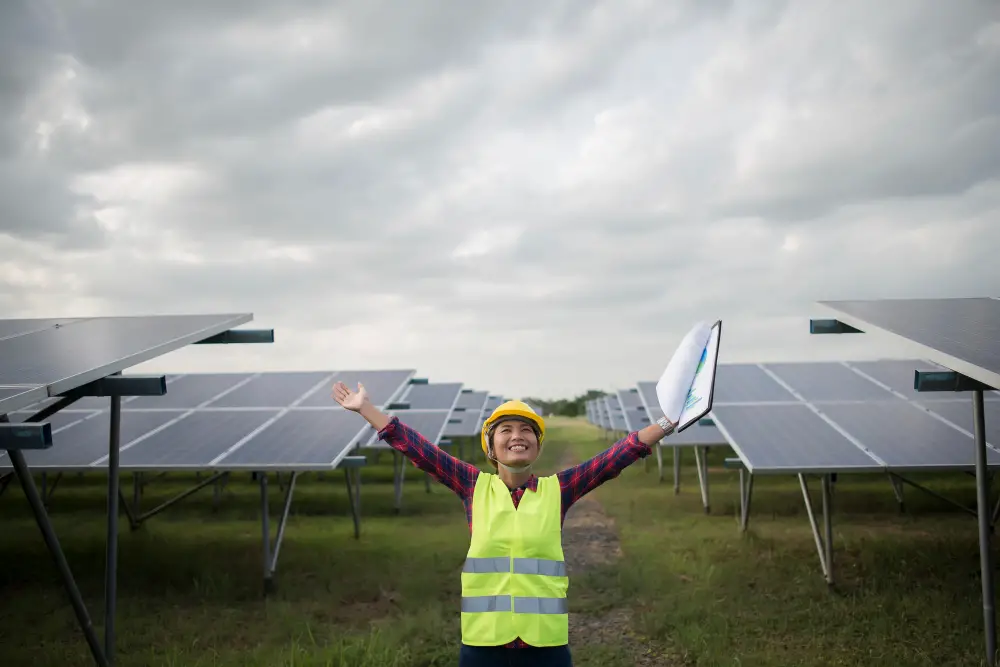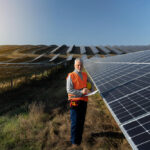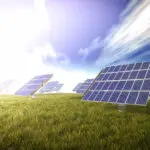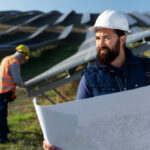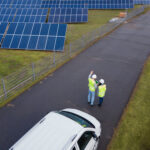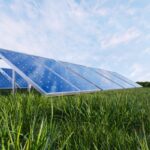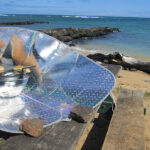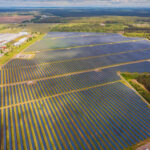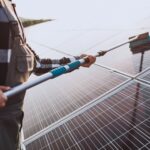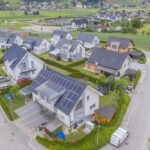Designing a solar farm is an exciting and rewarding task that requires careful planning, analysis, and execution. As the world continues to shift towards renewable energy sources, solar farms have become an increasingly popular option for generating clean and sustainable electricity. In this blog post, we’ll dive into the details on how to design a solar farm, including the key considerations, steps involved, and best practices to follow.
Key Considerations for Designing a Solar Farm
Location: The location of your solar farm is one of the most critical factors to consider. You’ll want to choose a site that receives plenty of sunlight throughout the year, has minimal shading from trees or buildings, and is close to existing infrastructure such as roads and power lines.
Size: Determine the size of your solar farm based on the amount of electricity you want to generate and the available space. A larger solar farm will produce more electricity but require more land and equipment.
Technology: There are two main types of solar panel technology: photovoltaic (PV) and concentrated solar power (CSP). PV panels convert sunlight directly into electricity, while CSP uses mirrors to focus sunlight onto a tower, heating a fluid to drive a turbine. Choose the technology that best fits your needs and budget.
Orientation: The orientation of your solar panels is crucial for maximizing energy production. Panels should face southward in the northern hemisphere and northward in the southern hemisphere to capture the most sunlight.
Tilt: The tilt angle of your solar panels can also affect their efficiency. Adjust the tilt to match the latitude of your location to minimize the impact of seasonal changes on energy production.
Tracking system: A tracking system allows your solar panels to follow the sun’s movement throughout the day, improving energy output. Consider investing in a single-axis or dual-axis tracking system, depending on your specific needs.
Inverters: Inverters convert DC power generated by the solar panels into AC power usable by homes and businesses. Choose high-quality inverters with a reliable track record and suitable for your system size.
Mounting structure: The mounting structure holds the solar panels in place and ensures they remain secure during harsh weather conditions. Select a sturdy mounting structure designed for your specific panel type and climate.
Electrical connections: Ensure that your solar farm is connected to the grid through a substation or distribution line. Hire a licensed electrician to handle the electrical connections and ensure compliance with local regulations.
Maintenance and monitoring: Plan for regular maintenance and monitoring to keep your solar farm running at its best. This includes cleaning the panels, inspecting hardware, and addressing any issues promptly.
Steps Involved in Designing a Solar Farm
Once you have decided that you need to get a solar farm on your land, you need to find a suitable and effective design for it. Follow the steps below:
Step 1: Site Selection and Assessment
- Identify potential sites using satellite imagery, GIS data, or site visits.
- Analyze factors like solar irradiance, topography, soil quality, and environmental concerns.
- Conduct feasibility studies to determine the viability of the project.
Step 2: System Design and Planning
- Determine the size of the solar farm based on energy goals and available resources.
- Select appropriate technology, panel layout, and tracking systems.
- Create a detailed system design, including electrical schematics and civil engineering plans.
Step 3: Permitting and Approvals
- Obtain necessary permits from local authorities, such as building permits, electrical permits, and environmental approvals.
- Engage with local communities and stakeholders to address concerns and build support for the project.
Step 4: Procurement and Construction
- Acquire high-quality components, such as solar panels, inverters, and mounting structures.
- Hire experienced contractors to construct the solar farm, including site preparation, installation, and electrical work.
Step 5: Testing and Commissioning
- Perform thorough testing and inspection of all system components.
- Ensure the solar farm meets safety and performance standards.
- Connect the system to the grid and commission it for commercial operation.
Best Practices for Designing a Solar Farm
- Collaborate with experts: Work with experienced engineers, consultants, and contractors who understand solar farm design and construction.
- Conduct thorough research: Stay up-to-date with industry trends, new technologies, and best practices in solar farm design and construction. Attend industry events, read relevant literature, and engage with other professionals in the field to stay informed.
- Optimize your design: Use software and modeling tools to optimize your solar farm design for maximum energy production and cost-effectiveness. Consider factors such as panel orientation, tilt, and spacing, as well as the impact of shading, wind, and other environmental factors.
- Choose high-quality components: Select components that meet industry standards and have a proven track record of reliability and efficiency. Consider the warranties and maintenance requirements of different components when making your selection.
- Consider the entire lifecycle: Think beyond the initial construction phase and consider the long-term operations and maintenance costs of your solar farm. Choose components and design elements that will reduce costs and hassle over the life of the project.
- Take advantage of government incentives: Many governments offer financial incentives for renewable energy projects, such as tax credits, grants, and feed-in tariffs. Research these incentives and incorporate them into your design and financing plan.
- Engage with local communities: Solar farms can have positive impacts on local communities, such as providing jobs, supporting local businesses, and generating revenue for local governments. Engage with community members and organizations to build support for your project and identify opportunities for collaboration.
- Prioritize safety: Solar farms can pose unique safety/ health risks, such as electrical hazards, heat stress, and falls from heights. Develop a comprehensive safety plan and provide proper training and equipment to all personnel working on the project.
- Monitor and maintain your solar farm: Regular monitoring and maintenance are essential to ensure optimal performance and extend the life of your solar farm. Implement a monitoring system to track energy production, detect issues early, and perform routine maintenance tasks to prevent equipment failures.
- Continuously improve: The solar industry is constantly evolving, and there may be opportunities to improve your solar farm’s design and operations over time. Stay up-to-date with the latest developments, solar farm vegetation management and consider implementing new technologies or strategies as they become available.
Conclusion
By following these best practices, you can design and build a successful solar farm that generates clean energy, reduces greenhouse gas emissions, and provides economic benefits to local communities.

